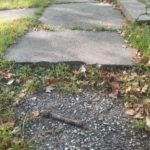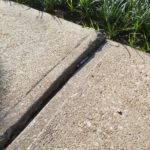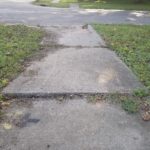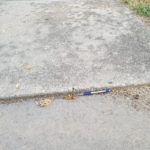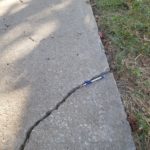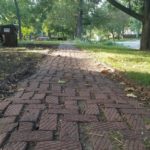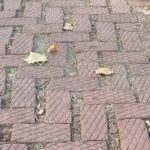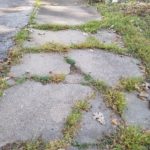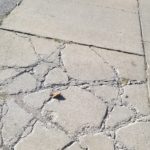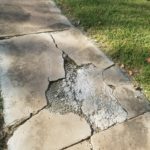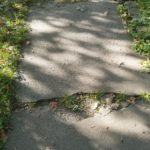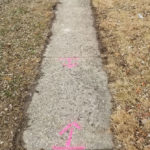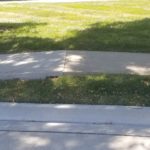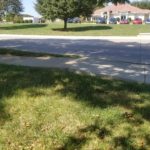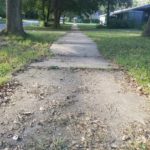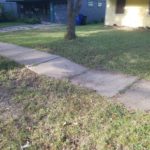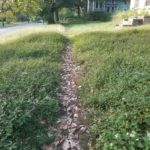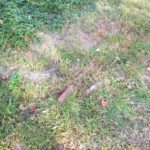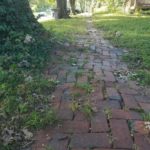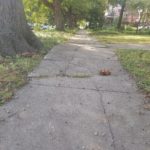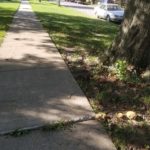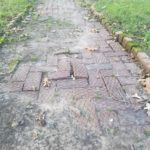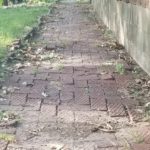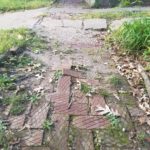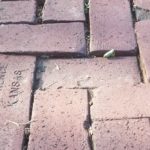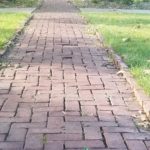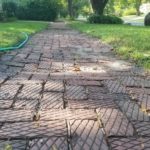2024 Key Dates
-
February - March – Inspections for the 2024 Sidewalk Improvement Program
-
October 15 – Self-Repair Deadline
-
Fall/Winter – Construction
-
Early 2025 – Invoices sent to property owners
The Sidewalk Improvement Program aims to provide safe sidewalks for all Lawrence residents—from kids going to school, to older residents walking to the market, to walkers and joggers of all ages, and especially to our residents with disabilities—by eliminating tripping hazards.
Lawrence contains 486+ miles of sidewalks, and many of those miles of sidewalks are in poor condition. The Sidewalk Improvement Program assists property owners in meeting their legal requirements (Kansas Statute and City Code) by helping identify and repair these hazards, as well as providing technical and financial assistance (where applicable). Additionally, as part of the program, the City is improving ADA sidewalk ramps along the target routes.
How the Program Works
- City staff utilizes a data-driven process (PDF) to identify priority sidewalk routes for inspection and repair.
- Properties included in the annual project receive a brochure (PDF) notification that inspections will be occurring soon.
- City staff inspects sidewalks on identified routes. When a hazard is identified, staff will mark the area with paint.
- White paint identifies a hazard caused by City-owned infrastructure (manholes, street tree roots, etc.) and will be repaired by the city. Property owners will not be charged for these repairs.
- Pink paint identifies a hazard that is the responsibility of the adjacent property owner to repair according to City Code.
- If a sidewalk hazard is identified, City staff will leave a door hanger at the property with a brochure that provides more information about the program. If the property is a rental, tenants should give the brochure to the property owner. A first notification letter and inspection report follow the completion of all inspections.
- If they would like to, property owners have 60 days from receiving the first notification letter to hire a contractor or perform self-repairs prior. A second notification is sent 30 days after the first notification as a reminder. If repairs are not made within the 60 day period, the City's selected contractor will perform the repairs and the property owners will be billed.
Utilizing City Contractor vs. Self-Repair
The City understands the difficulty that comes with hiring a contractor to make concrete repairs, which is why we allow property owners to let the City’s contractor do the work. In doing so, property owners see a number of advantages, including:
Favorable pricing due to economies of scale. Past pricing per square foot of concrete has been:
- 2019 - $7.00
- 2020 - $6.05
- 2021 - $5.85
- 2022 - $11.00
- 2023 - $11.57
- Past prices are not an indication of future prices and are provided for informational purposes only.
- The City solicits competitive bids by preparing a bid package with all properties utilizing the city’s contractor.
- The City manages the project (permitting, utility coordination and contractor oversight).
- One-year warranty on repair work.
- Financial Assistance for qualifying participants.
- Potential five-year payback period through property tax bill. Bills that are unpaid by the due date will be applied to property taxes in five annual installments with 4% interest.
Property owners who wish to utilize the City's contractor do not need to inform the City of their intent. Properties with sidewalk hazards remaining following the self-repair deadline will automatically be included in the City's bid package.
The City also understands that some property owners would rather complete the work themselves, or hire their own approved concrete contractor (PDF) to do the work. Those who wish to complete the work themselves or hire their own contractor must ensure the work meets City standards and specifications and Code requirements, and acquire the appropriate permits. They must also coordinate with City staff for inspection following the completion of the repairs. Should the repairs not pass inspection, the property owner would be required to do further maintenance until the sidewalk meets specifications. These repairs are not eligible for program benefits, including contractor pricing, financial assistance, warranty or extended payback period through property taxes.
What is a Sidewalk Hazard?
Hazards fall into one of seven categories:
- Vertical Separation - Part (or all) of one piece of sidewalk that is one-half inch or higher than the piece next to it.
- Horizontal Separation – A gap or opening of one-half inch or greater between concrete panels or bricks, or between a cracked concrete panel.
- Deterioration – Spalling, scaling, cracking or delamination of sidewalk causing deterioration that may catch the foot.
- Peaking and/or Dipping – Area in the sidewalk where adjacent concrete panels peak or dip more than three inches in relation to the established sidewalk grade.
- Vegetative Obstruction – Overgrown trees (including tree roots), plants, shrubs, grass or any other vegetation that hinders or prevents the use of the sidewalk. If it is determined that a street tree root (or any other City infrastructure) is the cause of the hazard, the city will be responsible for repairing the hazard.
- Loose & Depressed Bricks– Sidewalks that have broken, missing, loose, raised or depressed bricks will be marked as a hazard for repair.
- Non-Level Brick Cross Slope– Sidewalks made of brick that are not level from side-to-side will be marked as a hazard for repair.
Financial Assistance
Financial Assistance is available for qualifying property owners who utilize the city’s contractor and submit the appropriate assistance documents.
- Income-Based Assistance– The City will fund 100% of the repair costs for residential, owner-occupied properties that meet the income threshold of less than 80% of the area Median Family Income based on the United States Housing and Urban Development (HUD) guidelines. Submission of a complete application is required to be considered for this Assistance.
- Cost-Sharing Grant – For residential, owner-occupied properties with sidewalks adjacent to multiple edges of the property (i.e., corner lot). Property owners that qualify for this program receive partial financial assistance with the repairs.
- Out-of-Zone Financial Assistance – More information coming soon.

